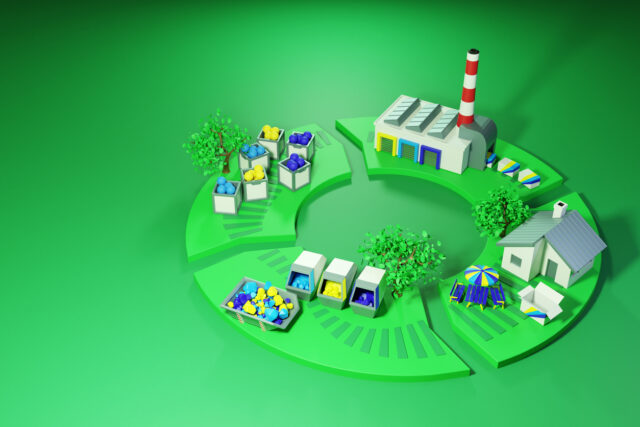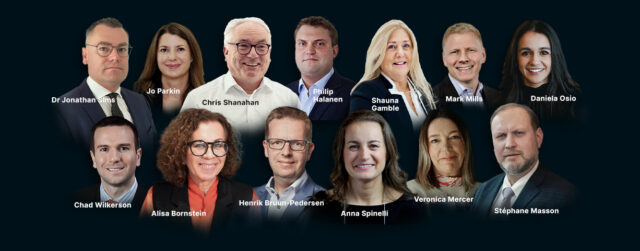Lance Younger, managing director of INVERTO and Jonathan Sing, Senior Project Manager at INVERTO, discuss how the spotlight is well and truly shining on procurement, as COVID-19 will represent a defining moment in its history while also playing a key role in deciding its future…
When we talk about procurement transformation, how do we break it down and define it for people?
Lance Younger:
It’s a very topical thing because ultimately, you only have so much time and so much resources to be able to align behind your own personal transformation. We have completed a bit of research recently on the link between procurement purpose and performance because what we saw and what we work with clients on, is this alignment of saying, “If my business focus is one of cost optimization, lean processes because I’m in a manufacturing environment,” then everything within the procurement organization needs to flow and be aligned behind that.
Then you need to build. You need to have roles that are defined as commercial engineer, cost engineer that target cost analyst. You have analytics that supports cost and deep cost appraisal. You then need individual capability and technology that supports that and metrics that are aligned in and around cost as opposed to an organization that’s leading towards product innovation and development like Nike. That’s what the ultimate customer wants. They want the next new product and design, and therefore the procurement function needs to have its capabilities aligned behind achieving that.
Organizations that are achieving that alignment are outperforming their peers. Transformation is a broad word, but ultimately you need to define it within your organization and ultimately within procurement so that you know what you’re not doing as much as you know what you’re doing as well.
Is there a balancing act between saving costs and focusing on bottom line versus driving innovation?
Lance Younger:
The core role of procurement is cost. It’s commercial. It’s being entrepreneurial. It’s looking at the price element of what organizations deliver. So first and foremost, procurement functions need to get that right. Depending on the organization, you are able to push beyond that to start focusing on other things. There’s some organizations that embrace that and it’ll be part of the CFO’s mandate to look at risk as well. It becomes an open door for procurement to push beyond cost and into risk.
In many organizations it relies upon procurement to push and to champion the innovation or risk agenda. There’s a big decision for individuals to take because you’ll join an organization and you’ll not only want to deliver on cost but also deliver on innovation. You’ve then got to commit to that and in some instances, the organization is either not going to be ready, not have the appetite, or they’re not going to have the ambition for you and your team to be doing more than just cost. Therein comes a big decision as to whether or not you decide to push it further, or you decide to do it somewhere else.
Tell me what you’ve seen in terms of procurement and COVID19?
Lance Younger:
There are a few things I’ve been really impressed with. One is the speed by which teams were able to mobilize their plans, actions and core teams, to get up and running. There’s a good proportion of lessons learned from previous crises about the resilience that actually exists within procurement functions.
The other thing that impressed me is how we’ve been able to collaborate cross-company and cross-sector as well. You’ve seen quite a few of these collaborations being put into effect, dropping aside any competition that exists to solve problems that exist with individual companies or simply providing protection for individuals as well.
We’ve also seen a very rapid look at risk and supply risk, and in the short term since January and February, we saw a lot of people addressing some of their initial supply risks very quickly. What we’re seeing now is almost a second wave. We’re in lockdown and some countries are coming out of lockdown, and organizations are starting to struggle a little bit with what next. We’re going into what we’re calling a bit of a dance where, as restrictions on COVID are relaxed, people are looking to understand what that means in terms of future demands, future course profiles and the like.
How important is it to look at successes and not just failures or challenges through COVID?
Lance Younger:
I think it’s an imperative. 14% of companies will effectively thrive. They’ll come out of this better than they went in. Their growth curves will be more significant. For many organizations you will need to be concentrating on how you become one of those companies that thrives and doesn’t just survive? The other thing we’ve statistically shown is that those organizations that at first tend to outperform their peers as well.
With those two things in mind, it means that procurement in particular needs to look and understand what it should be focusing on to come out of the COVID better, stronger. A relatively easy one for organizations to focus on is digitalization and what we look to do to improve our organizations across the board. Since COVID acted as such a catalyst for that at the very basic level, the number of different tools that people are using, from teams through to Skype through to Zoom, we’ve been able to scale and operate a new way of working which is synonymous with being digital and synonymous with being agile. It’s how we look to continue to look to embody that digital stuff into what we’re doing that will be one of the key enablers and a key positive for us as we come out of COVID.
Will the supplier relationship ever be the same again?
Jonathan Sing:
With every crisis, there is always something that changes and that remains, and maybe in this case, communication is one of them with the supplier. Now you have to make time to communicate every single day, and it is much more frequent and it’s both formalized and informal because everyone’s working remotely.
You can always have that drumbeat with your suppliers, and maybe this is something that’s going to remain in terms of the relationship itself. I think the focus is going to be changing moving forward because I think a lot of the transactions depending on the categories obviously and the suppliers can be quite transactional. I think immediate term the focus will change from having those potentially hard discussions on price but focus more on the availability at first and then medium term it will be a case of using that experience to drive value out of it.
They might look at driving further efficiencies, driving different operating models and looking at alternative supply of the supplier just to make sure that risk does not happen again. So this is also an opportunity for procurement professionals to learn with their suppliers to work slightly differently moving forward post-crisis because the issues that COVID is teaching or showing everyone is really an eye opener now. The relationship with the supplier will have to change to make sure it future-proofs itself in many ways.
Will businesses look to focus more on surviving rather than thriving?
Jonathan Sing:
We’ve conducted a recent survey and found that 70% of participants don’t necessarily plan to spoil the supply chain, which could be at first a negative outlook. But actually what it says at the same time is that businesses are trying to build a response to crises and will modify their supply chain. Just under half of the participants plan to change their supply chain or have crisis response procedures in place.
Lance Younger:
There’s an inflection point where people go from doing the base things; reacting to COVID, putting in a crisis team, putting a plan in place, scenario planning, and then executing on that plan. Probably the most important thing is then being very deliberate about how they can use that as a platform to rebound, to grow and to be strategic because procurement is well positioned to focus on the cost and risk. If they just focus on those two things, then they’ll come out of COVID in exactly the same position that they went into COVID and may take a step back especially when they’re looking to move forward. If they use that as a base to move forward and accelerate digital or deeper relationships with suppliers on innovation, then that is going to be where they’re going to drive the biggest amount of opportunity.
How has procurement’s conversation around sustainability and other areas that are not often spoken of?
Lance Younger:
If COVID hadn’t happened, then there are so many things happening with regards to the environment regarding social issues that mean that sustainability and procurement is going to be imperative. We saw it last year with budgets changing but also the procurement title changing as well. When risk was emerging as something for procurement, you didn’t see procurement’s title change to chief third-party risk manager. Whereas last year we saw four or five CPO’s changing their titles to being chief procurement and sustainability officer, and they’re in big organizations.
That change was coming. Once we get through COVID, it will become prevalent again, and the scope and scale of it will be trimmed depending upon which type of organization you’re in. If you’ve got a supply chain that’s heavily labor impacted, you’ve got a double-edged sword here. COVID has accentuated those industries that have got a huge amount of people in their supply chain. It accentuates the people element from a sustainable procurement perspective, whether it be working conditions through to payments and wage levels. So there are reasons to be spending more time and focusing more on sustainable procurement.
Will this redefine our preconceived notions of procurement?
Lance Younger:
It’s something that magnifies the reason why procurement exists, whether that be the intensity of focus around cost and the commercial role of being able to drive and understand what makes up cost. How can you understand detail down to the relationships that you need to have in place to be able to deliver both internally while capturing and building on externally those ideas. Right now is a catalyst for procurement and for people in the procurement industry.
We’ve seen how procurement has gone from looking at commercial to risk to innovation, sustainability. In 10 years’ time, there’ll be something else we’ll be looking at, but procurement, we’ll still be looking at it. We’ll still be working with suppliers to ensure that whatever the topic is, we’re able to bring it to bear within our organizations.
What is one change that you hope remains permanent?
Jonathan Sing:
The agility, resilience and the ability to respond fast to decisions. It’s important to have processes but have the right processes that allow you to really make the right decisions to be more competitive in a more and more dynamic environment.
Lance Younger:
Leadership. The success or failure of a team, a company and a procurement department is defined by leadership. Leaders can unlock gridlock. They’re able to communicate and be strategic and at the same time as being collaborative to basically move beyond inertia and engender imagination are all going to be critical things. So leadership at times of crisis and beyond is going to be an imperative for me.











